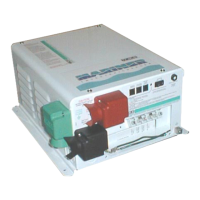,167$//$7,21
&RS\ULJKW7UDFH(QJLQHHULQJ&R,QF 7HOHSKRQH 3DUW1XPEHU
WK
6WUHHW1( )D[ 2FWREHU
$UOLQJWRQ:$86$ ZZZWUDFHHQJLQHHULQJFRP
3DJH
5. Do not cut the green wire that goes from the connector block to the DC grounding
conductor.
6. Replace the AC terminal block cover and reconnect the battery(s) and the AC sources.
ABYC A-25.6
The neutral for AC power sources shall be grounded only at the following points:
1) the shore power neutral is grounded only through the shore power cable and not grounded on board the
boat;
2) the inverter neutral shall be grounded at the inverter;
3) on systems using an isolation transformer or a polarization transformer, the inverter neutral (and the
transformer secondary neutral) may be grounded at the AC main grounding bus instead of at the inverter.
Excerpts from "The Green Wire Controversy"
by Robert Loeser from
Practical Sailor
, November 15,
1991:
"The three most common errors boat owners make are:
1). Connecting the grounded neutral (white wire) to the grounding wire (green wire)…
If the shore-grounded neutral conductor is grounded on the boat by connecting the
green and the white wires, underwater metallic hardware on the boat (propellers,
shafts, outdrives, metallic through-hulls) becomes a current-carrying ground return
path….In essence, the current radiates from the boat and creates a field of significant
size, usually behind the boat. Anyone swimming in that field is in serious trouble…the
voltage stops the swimmer's muscles from working, with the result that the swimmer
quickly drowns.
2) Omitting (or cutting) the green grounding wire connection to the engine. As far as
corrosion is concerned, cutting the green wire will work. But…the alternating current
loses its return path for leakage. Anyone who goes into the water when the boat is at
dock could be killed. And indeed this has happened several times in recent years.
3) Using equipment that requires both alternating and direct current [battery chargers,
dual-voltage lights, refrigerators], which is not specifically designed for use in a marine
environment. If AC leaks into the DC system, the current will automatically travel to
the engine and the underwater hardware. This is true whether the green wire is
connected to the engine or not.
Making these mistakes can be very serious, if not disastrous…."

